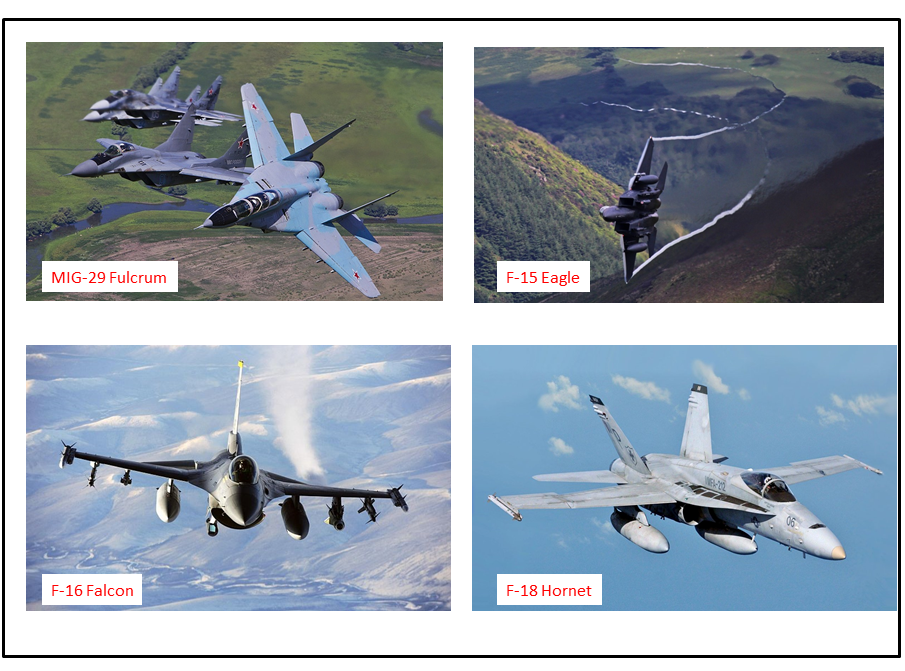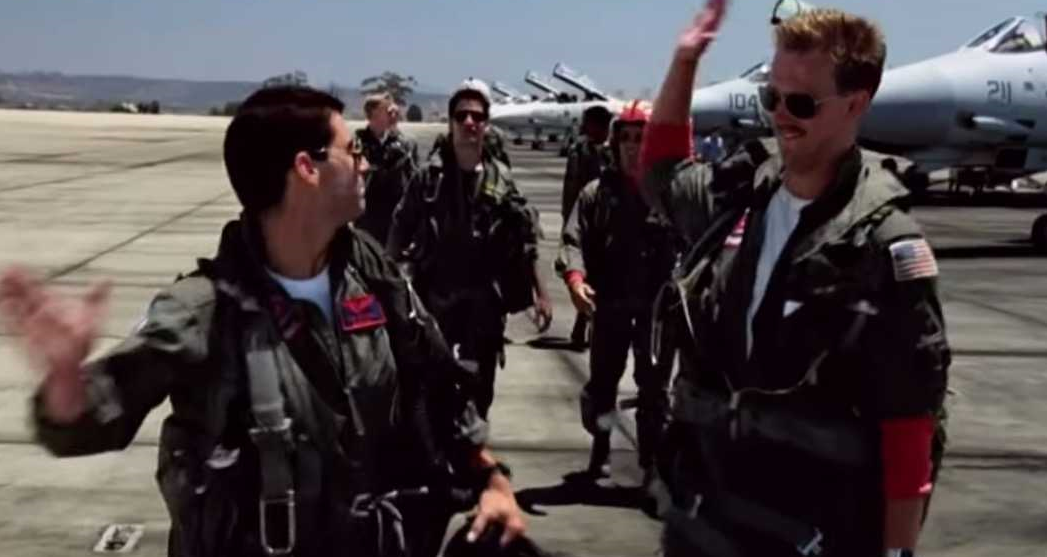I Don't Feel the Need for Speed: The Ivy League versus Top Gun
In last' week's article it was described how Ivy League colleges no longer have a Dean's List. In 2002, when Harvard scrapped the Dean's List, 92% of Harvard undergrads were on the Dean's List. The number one major at Harvard is economics and the number one destination for Harvard undergrads is Wall Street. So what did all these supposedly super smart 'Dean's List' students do when they started working on Wall Street? Basically, they sunk the world.
The fact that 92% of Harvard undergrads were on the Dean's List is indicative of the 'failure free' nature of most Ivy League educations. Once in an Ivy League school - where grade inflation is obviously rampant - the likelihood of any Ivy League student suffering any type of setback - academic or otherwise - is virtually non-existent. Indeed, the most difficult part of graduating from an Ivy League university isn't anything that might happen on campus. Instead, the most difficult part of graduating is getting accepted in the first place! It is no exaggeration to say that once in an Ivy League school - particularly for those interested in careers that take no special college learned skill, Wall Street finance, Secretary of State, Treasury Secretary, CEO of Goldman Sachs - all of the hard work is in your rearview mirror. By the time the typical Ivy League student has started to work on Wall Street or at the Fed, they would be hard pressed to even describe what it is like to struggle, much less fail, at anything.
Much can be gleaned by studying the differences between the typical 'training' the Wall Street elite go through at schools like Harvard, and the training many junior officers go through in the military. In contrast to the future leaders of Wall Street - who rarely suffer disappointment, loss or setback during their training - future leaders in the military are routinely subjected to training exercises where failure, rather than being avoided at all costs, is a lesson junior officers are forced to suffer through and learn from. One example among many is provided by dogfighting exercises the German Air Force in MIG-29 fighters provided to their NATO fighter pilot comrades.
After the fall of the Warsaw Pact and German reunification, the German Air Force inherited a squadron of MIG-29 fighters from the former East Germany. While lacking some of the avionics sophistication of their NATO equivalent aircraft, the MIG-29 was a world-class dogfighter - the classic turner and burner. In fact as a result of two capabilities, the MIG-29 was arguably the best close-in dogfighter in the world. These two capabilities were its all-aspect Archer missile and the helmet mounted display used by the MIG pilots.

The Archer is an infra-red guided missile; it tracks the heat, (infra-red energy), emanating from an enemy aircraft, and follows the heat to its source. However, unlike all other heat-seeking missiles of the time, the Archer had a significant 'off-boresight' capability. While most heat-seeking missiles needs a large heat source to guide on - the jet engine exhaust of an enemy aircraft being the most obvious - the Archer could guide off much smaller heat sources. (1) With the Archer, a pilot didn't need to maneuver their aircraft behind the enemy aircraft for an effective shot. By allowing a pilot to get the first shot off in a dogfight, the Archer provided a significant advantage to the MIG-29. The helmet mounted display complemented the advantage provided by the Archer. The helmet worn by MIG-29 pilots had sensors spaced over the surface of the helmet. An on-board computer monitored the location of these sensors and calculated where the pilot was looking. This system made it very simple for a pilot to select and engage a target.
An aerial dogfight has been described as a knife fight in a phone booth. The training exercises with the MIG-29's as adversary aircraft were designed by the Air Force and Navy to eliminate the beyond visual range (BVR) advantage US aircraft like the F-15, F-16 and F-18 enjoyed against the MIG. The much more powerful radars on these aircraft allowed these aircraft to fire long-range radar guided missiles before a MIG-29 pilot could ever hope to use the Archer missile. (infra-red seekers require targets to be much closer than radar guided seekers) Instead of being able to launch their long-range radar guided missiles from more than ten miles away, the training exercises were designed to force the US pilots into a 'merge' with the MIG-29s. In a merge, two fighter planes scream passed each other - canopy to canopy - at closing speeds in excess of 1000-MPH. Following a merge both pilots will turn inside each other and a 'close-in' dogfight - the knife fight in a phone booth - will begin.
Unsurprisingly, given both the advantages the MIG-29 had in this type of engagement and the experience the German pilots had gained by constantly participating in these exercises, (2), the results were often lopsided in the MIG-29's favor. Moreover, a key objective of the training exercise was for the Air Force and Navy pilots to lose their first several engagements. Designers of the training believed that after suffering several defeats in mock dogfights, the Air Force and Navy pilots would be more open to instruction. By exposing pilots to failure and their own shortcomings, the training helped to foster an atmosphere where pilots realized a need to constantly improve, and the recognition that there were other pilots just as good - or even better - than they were. In the words of Super Bowl winning football coach, Tom Coughlin, the training was designed to make the pilots 'humble enough to prepare, confident enough to perform.'
The validity of the military's philosophy on training its junior officers - the exposure of these junior officers to struggle and even failure - and its superiority to the training received by the Wall Street elite in Ivy League colleges and business schools - should be obvious to anyone. Junior officers in the military are given enormous responsibility, and a hallmark of these officers is their willingness to persevere through setbacks and other hardships to accomplish a task. Attendant to having to work through setbacks in accomplishing a task is the willingness of military officers to review those times when things didn't go right, to learn from them and to accept responsibility for them. Legendary football coach Paul 'Bear' Bryant was once asked to describe the source of his success. In doing so, Bryant revealed the truth implicit in the military's philosophy on training and the type of leaders this training is designed to produce. Bryant said, "If anything goes bad, I did it. If anything goes semi-good, we did it. If anything goes really good, then you did it. That's all it takes to get people to win football games for you." (3)
Contrast Coach Bryant's take with the following examples of the type of leadership forged in the 'crucible' of an Ivy League education;
- "I'm not senior management. I have a side role." Robert Rubin (Harvard and Yale) dismissing any responsibility he had for the collapse of Citi.
- "I have never been a regulator." Tim Geithner (Dartmouth) dismissing any responsibility for anything that occurred on Wall Street while he was President of the Federal Reserve Bank of New York!
- "All of this was complicated by the rapidly growing levels of leverage in the financial system and by the efforts of many financial institutions to skirt regulatory capital constraints in their quest for profits. Excessive leverage was evident in nearly all quarters." Henry Paulson (Dartmouth, Harvard) bemoaning excess leverage on Wall Street, while conveniently ignoring his enormous role in causing it by lobbying for changes to the Net Capital Rule.
- "The US financial regulatory system before the financial crisis was highly fragmented and full of gaps. Important parts of the financial system were inadequately overseen (if overseen at all) and critically, no agency had responsibility for the system as a whole." Ben Bernanke (Harvard, MIT) complaining about the poor regulatory state of the financial system in The Courage to Act when he regularly praised the financial system as 'well regulated' before the crisis.
- “My prediction, even with Fannie, that we should be doing low income people, rent them housing and I have been a strong pusher for rental housing. In terms of home ownership, I have been skeptical…” Barney Frank (BA Harvard, Harvard Law) in 2013 claiming that he never pushed homeownership during the bubble years.
Harvard's motto is 'Veritas;' Latin for truth. Based on the shortcomings of both its graduates and the school's transparently defective pedagogy in preparing these graduates for leadership positions, its motto should be 'I don't feel the need for speed.'

Peter Schmidt
November 22, 2020
Sugar Land, TX
P.S. - As always, if you like what you read, please consider registering with the site. It just takes an e-mail address, and I don't share this e-mail address with anyone. The more people who register with the site, the better case I can make to a publisher to press on with publishing my book! Registering with the site will give you access to the entire Confederacy of Dunces list as well as the Financial Crisis timeline. Both of these are a treasure trove of information on the financial crisis and the long-running problems that led to it.
Help spread the word to anyone you know who might be interested in the site or my Twitter account. I can be found on Twitter @The92ers
ENDNOTES:
1. The exact capabilities of the Archer are, of course, a closely guarded secret. Moreover, the all-aspect seeker head of the Archer required cryogenic cooling. Obviously it was a very sensitive design and may not have been as reliable in actual combat as it was assumed to be in the training exercise described here. That said, the Archer's off-boresight capability - whatever it may have been in actual combat - came as a very rude awakening to the Air Force and Navy. Upon discovery of the Archer's immense potential, the US Navy and Air Force quickly developed a new generation of the venerable Sidewinder missile, the AIM-9X.
2. In military parlance a 'perishable skill' refers to a war-fighting skill that can only be maintained and sustained with constant practice and training. Among the most perishable of all military skills is aviation.
3. http://www.the92ers.com/blog/bear-bryant-net-capital-rule-henry-paulson-and-leadership-wall-street

